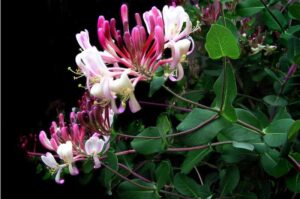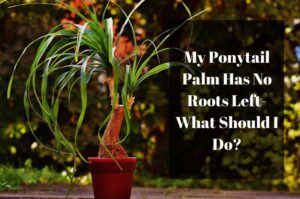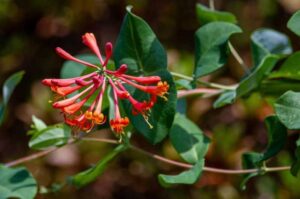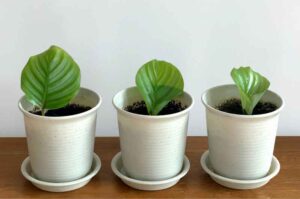Why Is My Gardenia Wilting? (7 Causes and their Solutions)
The show-stealer of every garden, found mostly outdoors, Gardenias (Gardenia augusta/ Gardenia jasminoides) is primarily known for their mesmerizing foliage and intoxicating fragrance. Noted for their evergreen beauty, these shrubs are not the easiest to grow. They require special attention and considerable maintenance to be at their best. If you ever notice that your Gardenias are wilting or dying, there are several problems that you have to acknowledge and rectify.
The main reason for which your Gardenia plant is wilting is disproportional water arrangement, i.e. overwatering or underwatering. Some other reasons include soggy and waterlogged soil causing roots to rot, low light conditions, inefficient soil conditions, or less acidic soil, low humidity, pest infection like spider mites, and several other reasons.
We have crafted for you a detailed study of all the reasons that might lead your Gardenias to wilt. Take a look at this article to know why your Gardenia is wilting and how to get them thriving again.
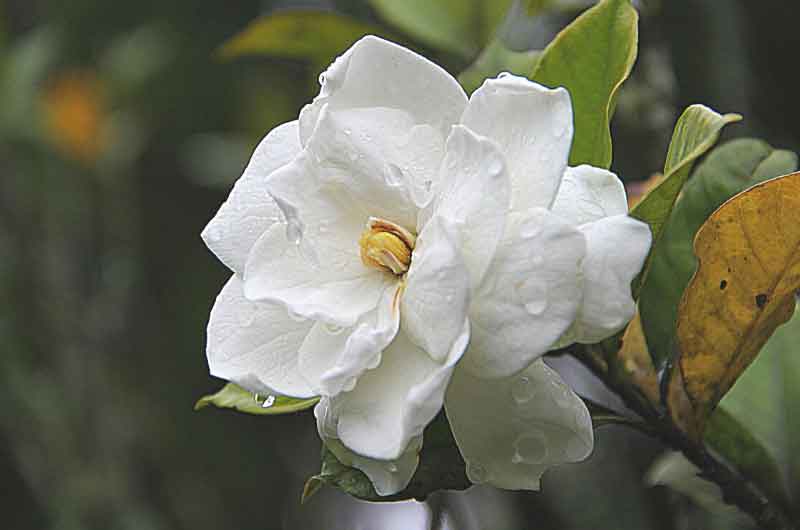
Some common causes for which your Gardenia plant is wilting
The most common cause behind the wilting of Gardenia is root rotting. When the soil gets too soggy, the roots of the plants get infected and start to rot, causing the entire plant to wilt.
Gardenias are irresistible to heat and overwatering can cause them a lot of damage. General symptoms like yellowing of leaves or wilting of leaves indicate rotted roots. Some of the common Gardenia problems that lead the plant to wilt are pest attack, insufficient lighting conditions, unsuitable water requirements, overfertilizing, etc.
Let’s dig into the topic deeper,
Overwatering
Overwatering is the most common reason that leads Gardenias to wilt. If you notice drooping leaves or wilting in your Gardenia plant, this is the first thing that you should check for.
Avoid letting your Gardenia plants sit on soggy soil. When Gardenia roots are exposed to wet soils for a prolonged period, the risk of root rotting increases which further proves to be fatal for the health of the plant.
Once the root starts rotting the plant will not get enough moisture and nutrients for its survival and as a result, the plant will start to show symptoms like leaf wilting and leaf yellowing.
How do you know when your Gardenias are overwatered?
It is easy to misread the first few hints as it is very common in all outdoor plants, but if you want your Gardenias to be healthy, take precautions as quickly as possible on seeing the following indications:
- Initially, the older leaves towards the bottom of the plant will start turning yellow and, eventually, the entire foliage will turn yellow.
- Despite the soil is damp, there will be widespread leaf drops. Yellowing and leaf drop are indications that there is a deficiency of various soil nutrients like nitrogen, zinc, and iron. Leaf drops can also refer to unbalanced soil pH.
- If you notice that even after the growth of new leaves, the tips of the leaves turn brown, take immediate action as it is due to overwatering.
- If there is a bud drop even after the fulfillment of optimum water, light, and temperature requirements, it might be due to rotted roots.
- Lastly, when the plant finally wilts after giving all the hints, the possibility of root rotting due to soggy soil is obvious.
In the case of overwatering, Gardenias are plants that need a considerable amount of care and attention. Similar to overwatered Gardenias, underwater Gardenias also cause wilting.
How to prevent Overwatering in Gardenia?
These are the following steps to water your Gardenia correctly to ensure that it doesn’t wilt,
- The soil should be moist and well-drained.
- Gardenias require 1 inch of watering every week.
- Always check the top one inch of the soil to see if it is wet or not.
- Do not over or underwater your plants.
- The soil needs to be consistently moist but not soggy.
- Apply a 5-10cm layer of organic mulch to maintain the temperature of the soil as well as keep it moist.
- Apart from that, water with distilled water once a month to drain away from the excess salt from the fertilizers.
If you want to know the best care routine for your Gardenias, you can check out this video:
Under Watering
Gardenias require the direct heat of the sun. They are intolerant to shade. As a result, if you underwater your Gardenia plants, they will dry out in the sun and wilt.
In underwatering conditions, the soil hardens and the root does not get the required amount of nutrients to make the plant grow. This causes less transportation of water throughout the plant.
When the soil becomes dry, the roots do not receive the required amount of nourishments, causing the plant to wilt. The stomata of the leaves close, and the evaporation of water stops, eventually, wilting and killing the plant.
How to prevent underwatering your Gardenia plant?
The only solution to underwatering is to maintain a strict watering schedule. Water the plant regularly, but make sure to not overwater it, otherwise, it will cause the root to rot. Plants like Gardenias are tricky and need a lot of care and nurture. Failing of which will kill the plant eventually. The ideal water requirement for gardenias is 1 inch of rain or equivalent watering every week.
Inappropriate potting soil
Selection of wrong potting soil might be an issue for your Gardenia plant for which it is wilting. Choose a good well-drained potting soil, which can provide a good amount of nutrients to your Gardenia plant, and drain out excess water easily.
Because soggy soil is the main reason why the Gardenias wilt. Further, it will also infect the roots and rots them. As a result, the leaves start yellowing, attract pests and cause the plants to die.
Gardenias are high demanding plants. If the temperamental needs of these subtropical plants are not met, they are prone to wilting, improper soil pH also can lead the plant to wilt suddenly.
An ideal soil for Gardenia plant
Here are the things you should consider while selecting soil for your Gardenia plant.
- Gardenia plants thrive best in acidic soil with a pH between 5.0 and 6.0.
- In the case of indoor Gardenia plants, the soil should be kept loose and organic.
- Try not to plant your Gardenias near concrete walls as the acidity of the soil is high in such areas, which will lead to improper pH balance, making the Gardenias wilt.
- Make sure to empty any drip tray or cachepot so that the roots aren’t sitting on standing water. Your Gardenia pots should have plenty of drainage holes to prevent waterlogging and soggy soil.
You may also like this article- How to make the perfect potting soil for your indoor plants?
Low levels of humidity
Gardenias are plants from the southern region, therefore, essentially, it requires humid conditions. If humidity is low the plants will dry out and be home to spider mites and other insects. The flowers of the plant will start to drop if there is dry air.
Solution
Gardenias require very high humidity. For outdoor plants, it is recommended to keep the plants misted and surround them with misted rocks and pebbles.
While for indoor Gardenias, misting is not a very appropriate option as it may lead to spots of the leaves. When water sits on the leaves for a long period, it rots the particular portion of the leaf, causing it to drop.
Therefore, for indoor Gardenias, use a humidifier to prevalent the desired amount of humidity. You can find good-quality humidifiers at various prices online.
Low light conditions
Gardenias need to receive 8 hours of full sunlight every day to remain healthy. Place your plant on a site with full sunlight to part shade. In lower light conditions, the soil takes a long time to dry out. This increases the risk of overwatering the gardenia plants.
Ideal lighting condition for Gardenia plant
Gardenias essentially require high sunlight. In warmer months, they grow best in the morning sun and afternoon shade. There is a possibility of scorching leaves in the summer seasons. However, high sunlight conditions remain constant for the growth of the plant.
In winters, Gardenias do not grow properly. They are cold-sensitive and often die in the winter season. Hence, it is advised to keep them under direct sunlight in winters. Growth lights are a good option if you are willing to grow Gardenias in colder regions. Check out grow lights for plants to grow Gardenias with optimum light requirements.
You may also like this article- Why Is My Gardenia Not Flowering? (Causes and Solutions)
Pest attacks
One common pest problem in Gardenias is spider mites. They cause tiny webs under the leaves, where the leaves join the stem.
Spider mites can be detected with a sheet of white paper swiping across the bush, tapping a few branches onto the paper, folding the paper in half and rubbing them together. If you notice tiny smears of blue, red, and brown, those are spider mites.
How to prevent pest attack on Gardenia?
- You can prevent spider mites by blowing the bush with a hose every day, until it gets under control, or apply neem oil. Neem oil is an effective pesticide, which is also organic, therefore, it will not harm your plant in any way.
- Additionally, fertilize your Gardenias every 2 to 4 weeks between March and October, which is their growing season. Use horticulture oil or insecticidal soap for whiteflies or mealybugs.
Temperature requirements for Gardenia
Gardenias require an optimum temperature of 65 to 70 degrees Fahrenheit during daytime and 60 to 65 degrees Fahrenheit during night times. The flower buds will fail to bloom if the required temperature is not maintained.
Conclusion
These were some of the most common reasons behind wilting of your Gardenia plants. No doubt, its care is a little tricky and requires a lot of effort, but Gardenias add a point of admiration to your garden.
Do the needful to keep your Gardenias healthy and see how they glorify your garden. We hope that this article helped solve most of your queries about wilting gardenias.



